It’s more than the music- a UX case study
It’s more than the music- a UX case study


Nowadays, we can do anything from our cellphones. We can buy groceries, connect with people across the world, and even download our favorite music as soon as its released. Shoot! My favorite rapper, Logic, dropped his new album: Young Sinatra IV, two days ago and I had the whole album on my cellphone within seconds after its release. While its true that technology has given us access to so many things, it has also taken away (unintentionally) from us a vital element from our society: human connection.
The question is, what are people doing about it?
In my team’s research of Sofar Sounds, we saw that people were going to these secret intimate concerts for more than just music.
Project Scope:
In my second project General Assembly’s UXDI Program in New York City, I worked with a team of three to evaluate why people went to Sofar Sounds

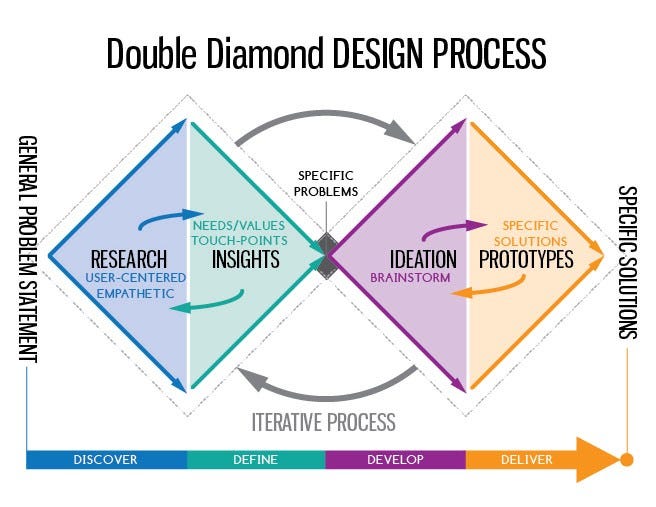
In the first part of our project, my team and I used Guerilla and Personal In-Network recruitment methods to conduct our research. As we researched Sofar via the web, we quickly realized that we had two types of users, or customers, people that performed at Sofar events and people that attended them. In order to gather useful insights, we created questionaries that helped us screen people that either went or performed at Sofar events. We decided that the best way to understand our customers, was to put ourselves in their shoes. So we all decided to go to a Sofar event in Brooklyn, New York, the next day. In the event, we were able to see and learn so much! We also took this opportunity to screen and recruit attendees and musicians for our research.
In our research, we initially asked attendees very broad questions like why do they come to Sofar events, and how do they show (or wished to show) their appreciation to musicians at these events. For musicians, we asked them why do they decided to perform at Sofar, and what makes them keep on performing at these small and intimate concerts.
During our eight interviews (four attendees and four musicians)my team and I switched the interviewer, scribe and recorder roles. Once we were done, we divided the recording, in order to transcribe them individually and then come as a group to create an affinity map, which allowed us to identify patterns and possible.

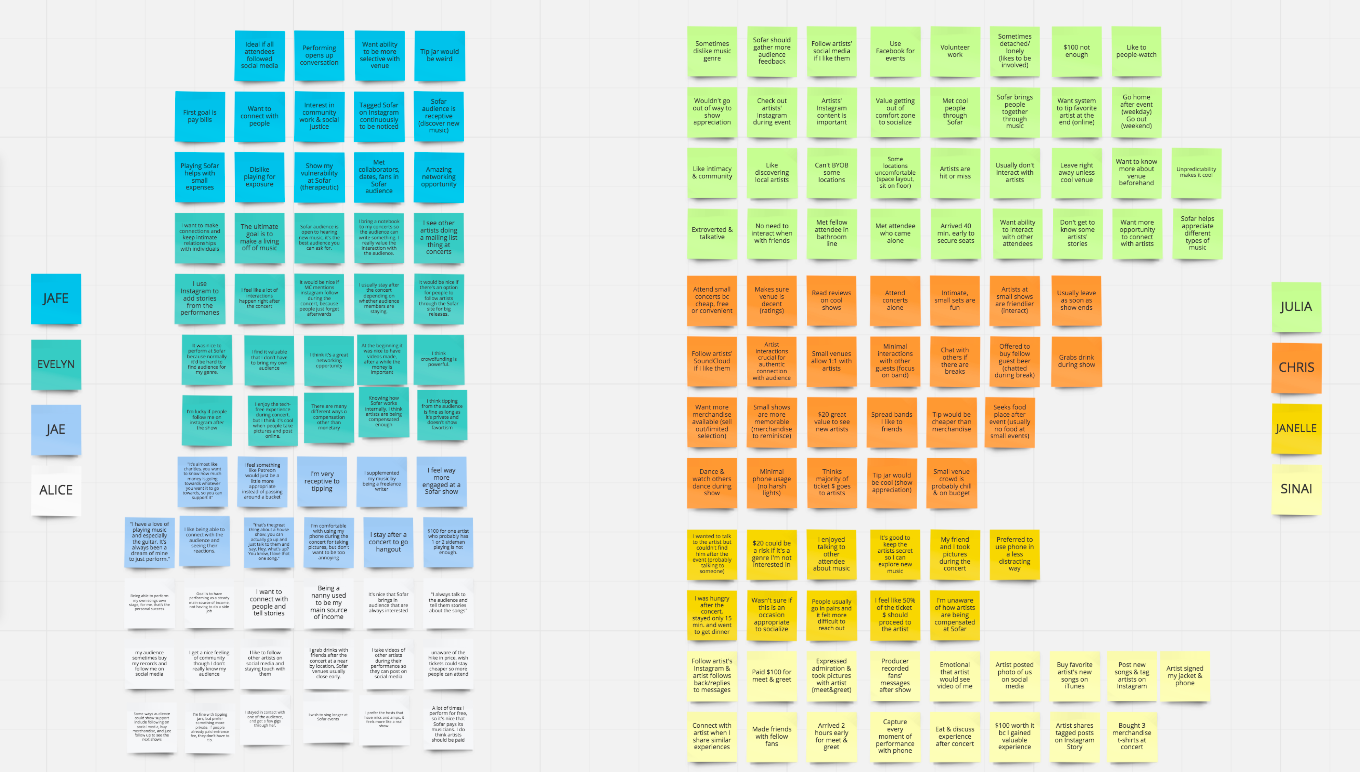

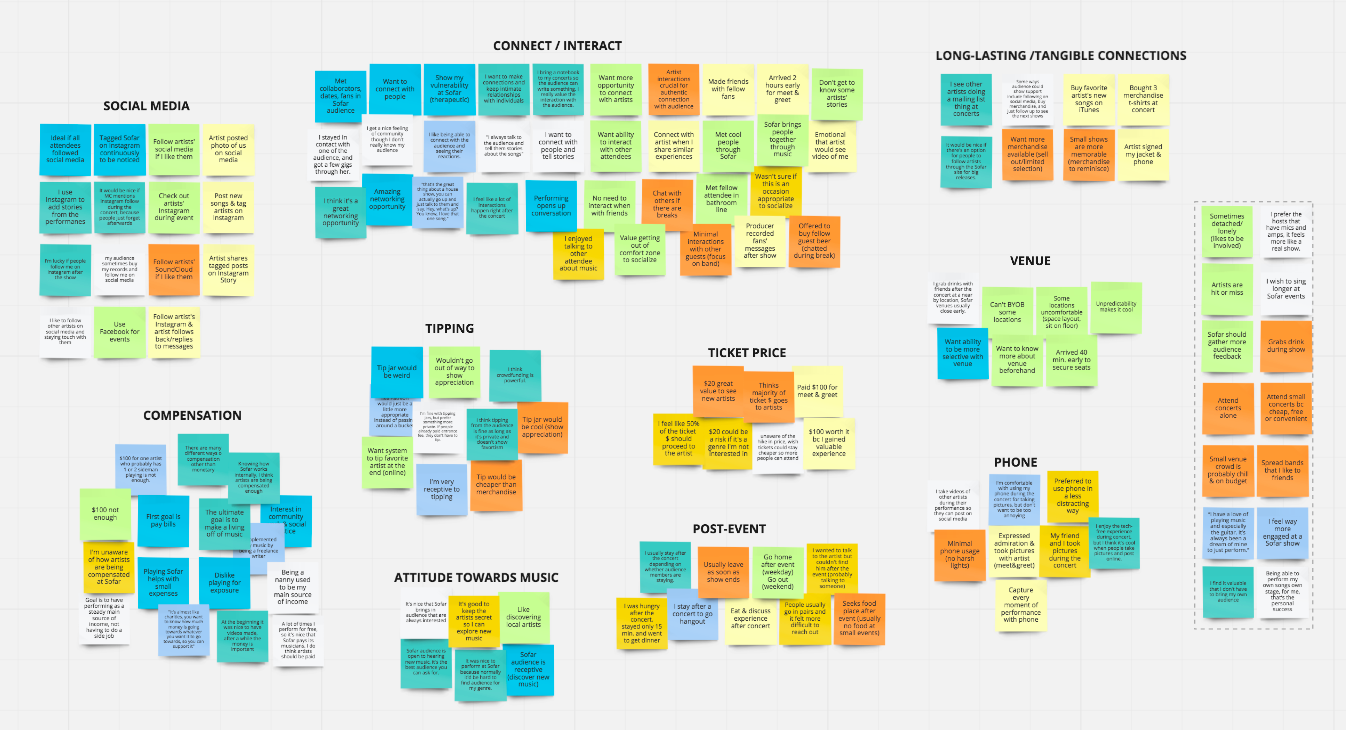
After developing the affinity map, we developed the two personas that we were going to build solutions for. These two personas were very important, because they helped us empathize with our clients and give our team one direction: to build solutions that satisfy their goals, needs, pain points and behavior.
Persona 1: The Attendee

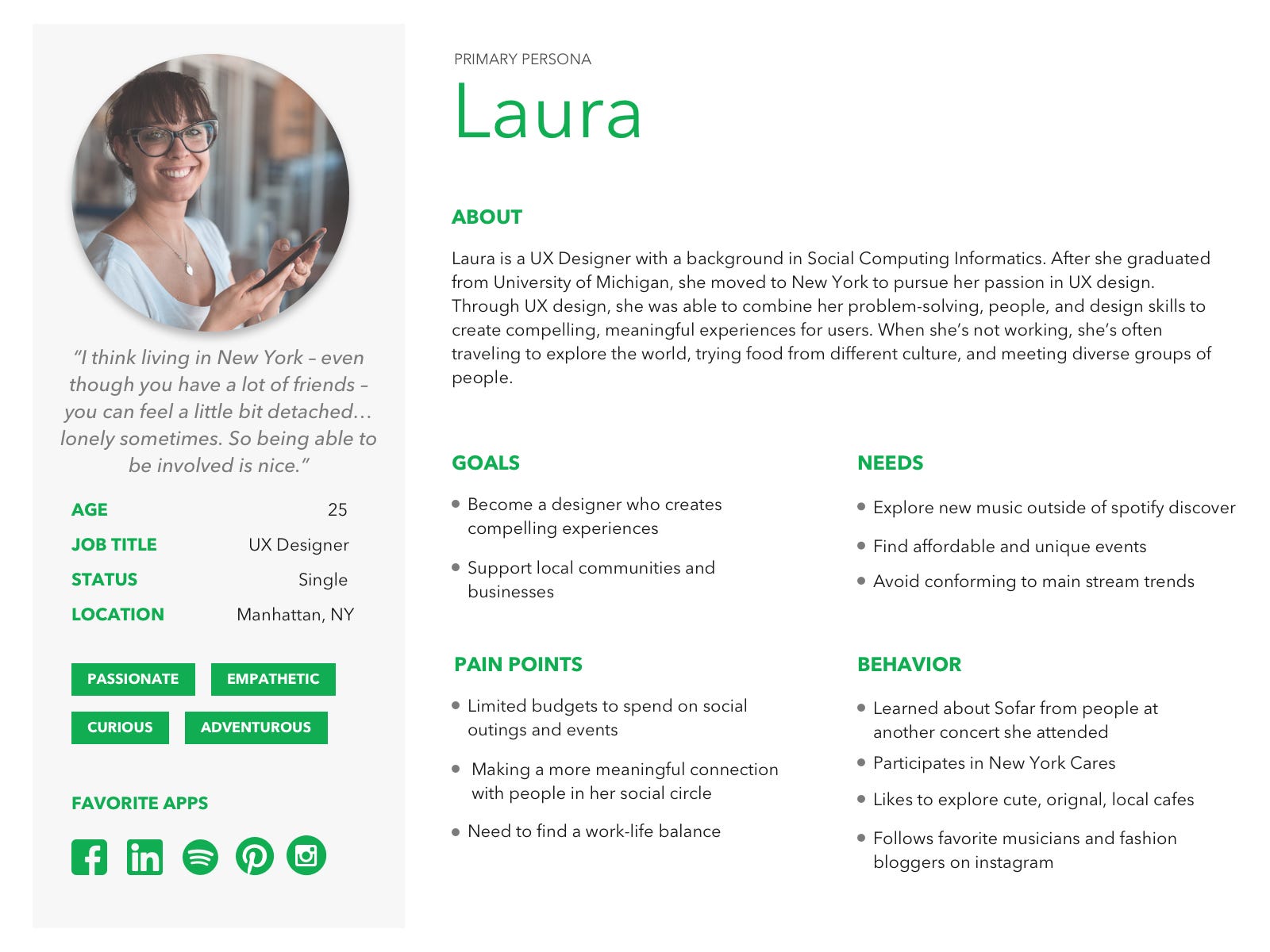
Persona 2: The Musician


We also decided that the the attendee would be our primary user (our main client), and decided to create Laura’s journey map (see below).


In our research we learned that people were not just going to Sofar events to discover new music and the Logics of the future. They were going to these events because its intimate atmosphere gave both, musicians and attendees, an opportunity to personally connect with each other!
With our research data and our two personas, we had the necessary material to revise our initial hypothesis: We believe that by creating a feature that enables tipping musicians, as well as connecting with musicians and other attendees, we will enhance the social experience of Sofar events, and formulated a problem statement.
Problem Statement:
Both musicians and attendees at Sofar events enjoy building a meaningful connection. However, the disconnect about musicians’ compensation at concerts may prevent them from performing self-sustaining concerts.
How might we build that connection and not only help attendees support the musicians they like, but also allow musicians to sustain the intimate performances they enjoy?
As we moved on the the second part of the Double-Diamond (picture above), we started ideating several solutions that might successfully connect both, musicians and attendees.
We decided that the best and most practical way to connect people at the events was through their cellphones, specifically the Sofar mobile application in their iPhones. We came to this conclusion because the majority of our interviewees used the Sofar mobile app, and used iPhone.
Below are some of the ideas that we considered:

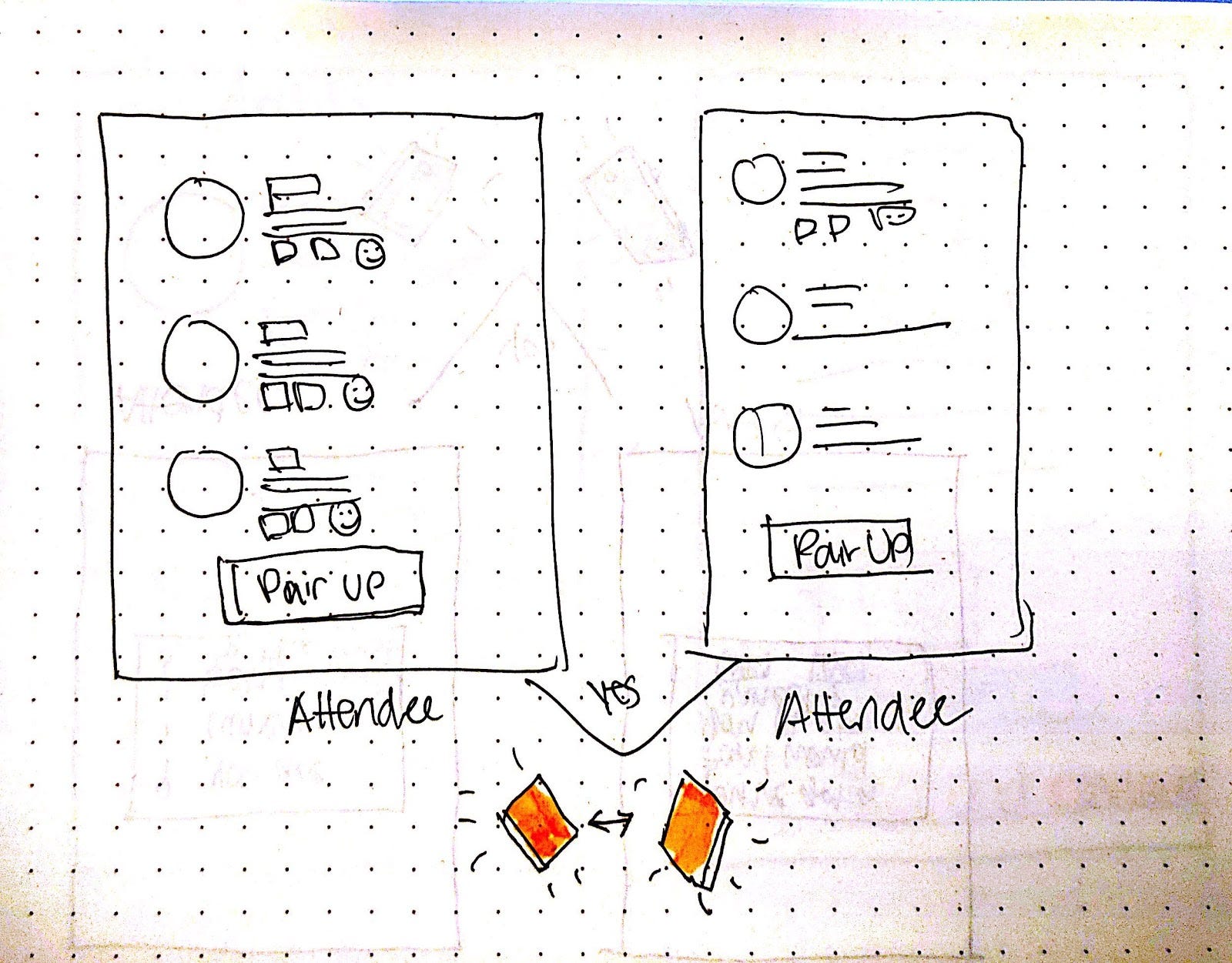

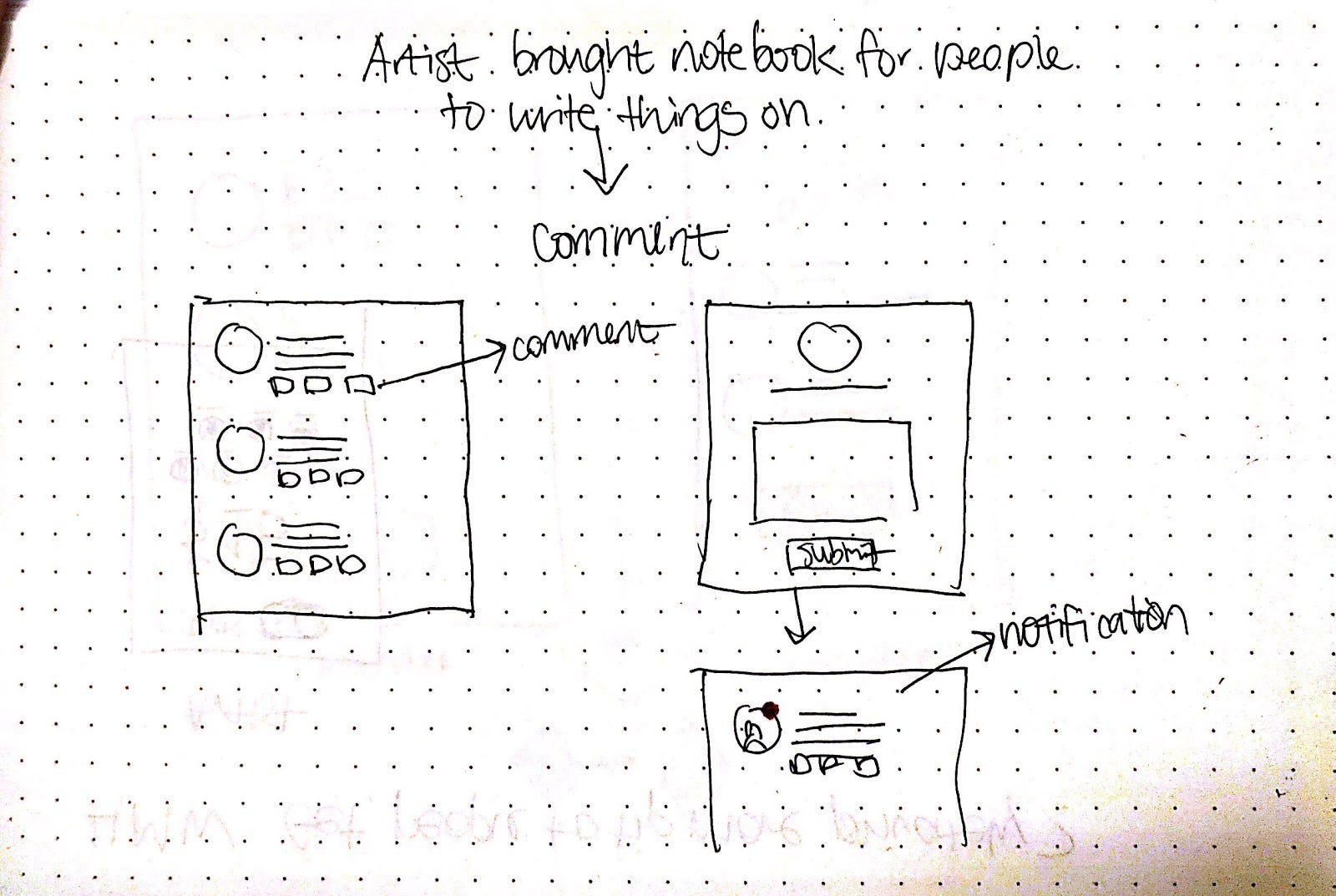

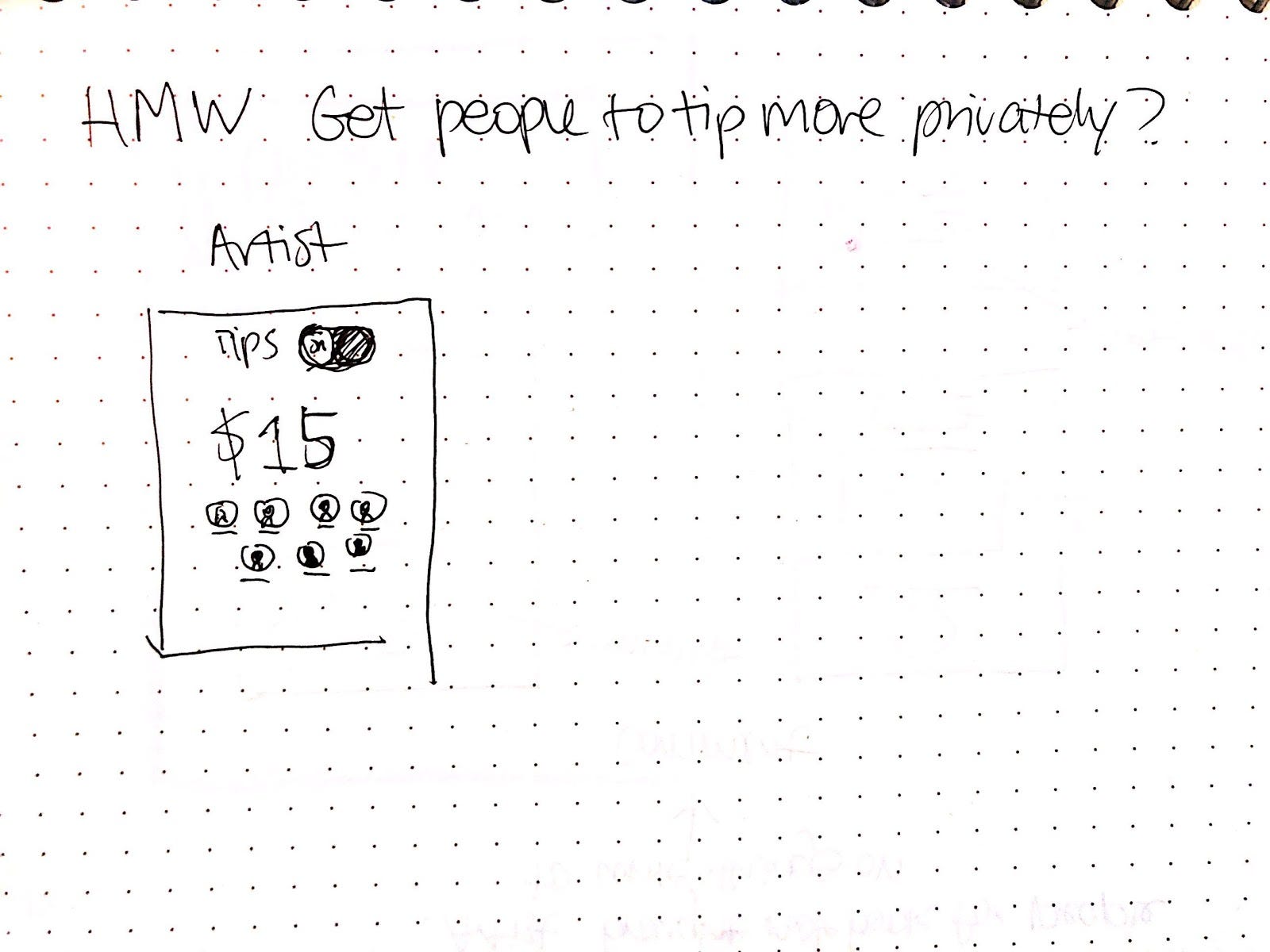
Along with these features, we also thought about creating an internal chatroom for people going to Sofar events and afterparty events, in order to create more opportunities to help people connect on a personal level.
After reviewing all of our options, it was evident that not all of the solutions were worth pursuing now. We had to select the ones that will connect people in the least expensive way and with the least amount of effort.
How do we decide what features to develop and how do we justify them?
In order to address this matter, we took a look at our insights and personas, and we use the MoSCow method, which helps us identify what we Must Have(Essential), Should Have(Nice to have), Could Have & Won’t Have, to determine the best features to integrate to the Sofar mobile app (see below).

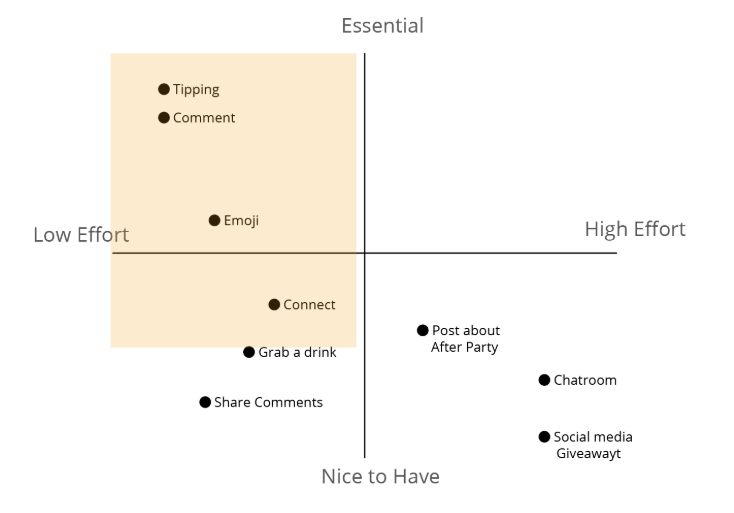
Once this was done, we agreed that we should build a feature that allows attendees to tip musicians through the app with a personal message. In order give everyone an opportunity to connect with each other, we made a separate attendee-to-musician feature. We also agreed on creating a random pairing feature, which paired attendees with anyone at the event, including musicians, to talk about anything they wanted during the three10-minute breaks that took place.
Before we build the wireframes of the features, we first made path flows, which captured how Laura was going to interact with our solutions, from a macro overview (see below).

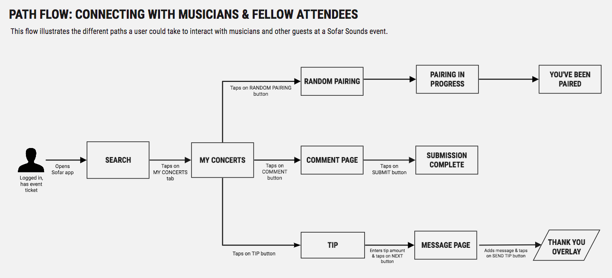
We then made our basic prototype and conducted user-testing, and identified that people had a hard time understanding the random paring concept, and thought that the attendee integrated features were not so intuitive, when compared to the ones for the musicians. We then decided to make the screens cleaner: easier to understand and with less text. On our second round of testing we were able to see even higher success for creating opportunities for people to start long-lasting human connections.

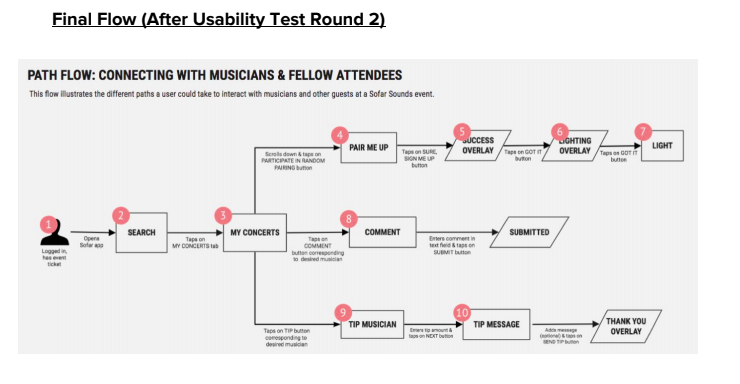

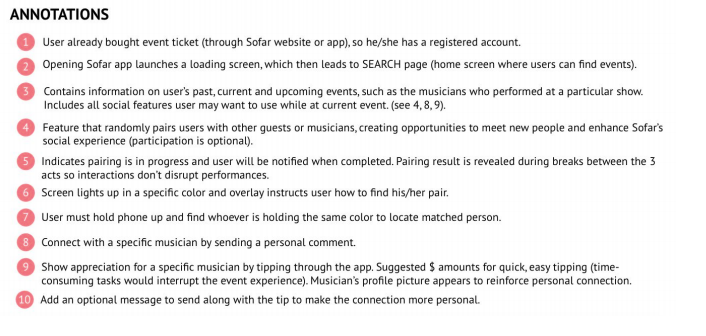
Final InVision prototypes for attendee:
and musician:
Interestingly enough, what initially took away human interaction from us, was now bringing it back. If used right, technology can enhance our lives. In the case of Sofar, improve the way we connect with others.
Next Steps: To take our solutions to the next level, we would have to consider other ways of creating a connection, perhaps marrying concepts of random-pairing and the communal aspects of an afterparty. We would have to experiment with such innovative concepts. Figuring how to use technology to bring us together and create long-lasting relationships, its still a new concept for most us.
Lessons Learned: No matter how innovative solutions might be, if they are not intuitive, they will not be used. Also, it is important to be selective with the information we put on an app’s screen, people do not like to be overwhelmed with choices or decisions. I certainly learned new ways to create thoughtful solutions that are simple and valuable.
#lessismore #simple #usefulldesigns #nyc #generalassembly #UX
